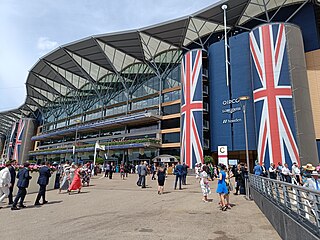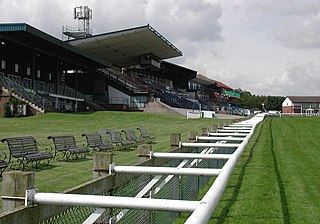
Horse racing is the second largest spectator sport in Great Britain, and one of the longest established, with a history dating back many centuries. According to a report by the British Horseracing Authority it generates £3.39 billion total direct and indirect expenditure in the British economy, of which £1.05 billion is from core racing industry expenditure, and the major horse racing events such as Royal Ascot and Cheltenham Festival are important dates in the British and international sporting and society calendar.

The Jockey Club is the largest commercial horse racing organisation in the United Kingdom. It owns 15 of Britain's famous racecourses, including Aintree, Cheltenham, Epsom Downs and both the Rowley Mile and July Course in Newmarket, amongst other horse racing assets such as the National Stud, and the property and land management company, Jockey Club Estates. The registered charity Racing Welfare is also a company limited by guarantee with the Jockey Club being the sole member. As it is governed by Royal Charter, all profits it makes are reinvested back into the sport.

Goodwood Racecourse is a horse-racing track five miles north of Chichester, West Sussex, in England controlled by the family of the Duke of Richmond, whose seat is nearby Goodwood House. It hosts the annual Glorious Goodwood meeting in late July and early August, which is one of the highlights of the British flat racing calendar, and is home to three of the UK's 36 annual Group 1 flat races, the Sussex Stakes, the Goodwood Cup and the Nassau Stakes. Although the race meeting has become known as 'Glorious Goodwood', it is sponsored by Qatar and officially called the 'Qatar Goodwood Festival'.

Ascot Racecourse is a dual-purpose British racecourse, located in Ascot, Berkshire, England, about 25 miles west of London. Ascot is used for thoroughbred horse racing, and it hosts 13 of Britain's 36 annual Flat Group 1 horse races and three Grade 1 Jumps races.

Newmarket Racecourse is a British Thoroughbred horse racing venue in Newmarket, Suffolk, comprising two individual racecourses: the Rowley Mile and the July Course. Newmarket is often referred to as the headquarters of British horseracing and is home to the largest cluster of training yards in the country and many key horse racing organisations, including Tattersalls, the National Horseracing Museum and the National Stud. Newmarket hosts two of the country's five Classic Races – the 1,000 Guineas and 2,000 Guineas, and numerous other Group races. In total, it hosts 9 of British racing's 36 annual Group 1 races.

Chester Racecourse, also known as the Roodee, is a racecourse located in Chester, England. The horse racing venue is officially recognised by Guinness World Records as the "oldest racecourse still in operation". Horse racing in Chester dates back to the early sixteenth century, with 1539 cited as the year racing began, although some sources give a date of 1512 for the first races in Chester. It is also thought to be the smallest racecourse of significance in England at 1 mile and 1 furlong (1.8 km) long.

Beverley Racecourse is a thoroughbred horse racing venue located in the town of Beverley in the East Riding of Yorkshire, England.

Nottingham Racecourse is a thoroughbred horse racing venue located in Nottingham, Nottinghamshire, England. It is situated at Colwick Park, close to the River Trent and about 3 km east of the city centre.

Pontefract Racecourse is a thoroughbred horse racing venue located in Pontefract, West Yorkshire, England.

Salisbury Racecourse is a flat racecourse in the United Kingdom featuring thoroughbred horse racing, 3 miles (5 km) southwest of Salisbury, Wiltshire, England. Fifteen race meetings a year are held there between early May and mid-October.

Lincoln Racecourse is a former horse racing venue to the west of the city of Lincoln, at Carholme, a flat tract of common land in Lincolnshire, England. It was the original location of the Lincolnshire Handicap. The course closed in 1964, and the following year the race relocated to Doncaster Racecourse where a small change to the race title sees it run as the Lincoln Handicap.

Rhoda was a British Thoroughbred racehorse and broodmare who won the third running of the classic 1000 Guineas at Newmarket Racecourse in 1816 and was the most successful racehorse in Britain two years later. Rhoda was one of the most active of all British classic winners, running in at least forty-five contests between 1816 and 1820 and winning twenty-one times. Her actual number of competitive races was even higher as many of her later races were run in multiple heats, with the prize going to the first horse to win twice. She won the 1000 Guineas on her second appearance but did not run as a three-year-old after finishing unplaced in the Oaks Stakes. Rhoda won three races in 1817, ten in 1818, four in 1819 and two in 1820.

Orville (1799–1826) was a British Thoroughbred racehorse and sire. In a racing career which lasted from August 1801 until October 1807 the horse ran thirty-four times and won twenty races. In his early career he was based in Yorkshire and won the classic St Leger Stakes at Doncaster Racecourse as a three-year-old in 1802.

Elis was a British Thoroughbred racehorse and sire best known for winning the classic St Leger Stakes in 1836. In a racing career which lasted from July 1835 until April 1837 he won eleven of his fifteen races. He finished second in his four defeats, two of which came when he was matched against the undefeated Bay Middleton. As a two-year-old he won five of his six races including the Chesterfield Stakes, Molecomb Stakes, Clearwell Stakes and Criterion Stakes. In 1836 he rebounded from a defeat by Bay Middleton in the 2000 Guineas to win Drawing-room Stakes, Racing Stakes, and Lewes Stakes in the summer. Elis was one of the first horses to be transported by horsebox and landed a major betting coup for his owners by winning the St Leger. He had limited impact as a sire of winners before being exported to Germany.

The 1780 Epsom Derby was the inaugural running of The Derby – the horse race which would become the "greatest turf event in the world" and after which more than 140 other horse races, including the famous Kentucky Derby, are named. It took place on 4 May 1780 on Epsom Downs in Surrey, England, and was won by Diomed, owned by Sir Charles Bunbury and ridden by Sam Arnull.

Sallust (1969–1987) was an Irish-bred British-trained Thoroughbred racehorse and sire. He showed good form as a two-year-old in 1971, winning two of his five races including the Richmond Stakes, but appeared to be just below the highest class. He ran poorly on his three-year-old debut but then won the Diomed Stakes, Prix de la Porte Maillot, Sussex Stakes, Goodwood Mile and Prix du Moulin. By decisively defeating opponents such as High Top and Lyphard he established himself as the best specialist miler in Europe and was rated the best three-year-old of 1972 by Timeform. He returned to Ireland for his stud career and had some success as a sire of winners.

Reform (1964–1983) was an Irish-bred British-trained Thoroughbred racehorse and sire. In a racing career which lasted from April 1966 until October 1967 he won eleven of his fourteen races. As a two-year-old he was beaten on his debut but won his remaining six races and was rated among the best colts of his generation in Britain. Reform was never entered in the British Classic Races, but proved himself to be an outstanding three-year-old in 1967, winning five of his seven starts. After winning the St James's Stakes, St James's Palace Stakes, Sussex Stakes and Queen Elizabeth II Stakes he ended his career by beating The Derby winner Royal Palace in the Champion Stakes.
Tap On Wood was an Irish-bred British-trained Thoroughbred racehorse and sire best known for winning the classic 2000 Guineas in 1979. As a two-year-old in 1978 he won seven of his thirteen races including the National Stakes. In the following spring he defeated the outstanding miler Kris to record an upset victory in the Guineas. His later career was disrupted by illness and he appeared in only two more races, finishing unplaced in the Derby and winning the Kiveton Park Stakes. He subsequently had some success as a breeding stallion in Europe and Japan.
Ernest Johnson is an Epsom Derby winning British flat racing jockey.
Commotion was a British Thoroughbred racehorse and broodmare who raced during World War II and was best known for winning the classic Oaks Stakes in 1941. After racing over sprint distances, she was stepped up in distance the substitute "New Oaks" over one and a half miles at Newmarket Racecourse. On her next appearance she won the Falmouth Stakes and was then retired from racing. She later became a very successful broodmare.



















